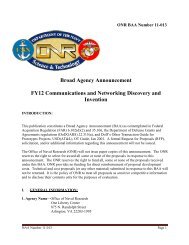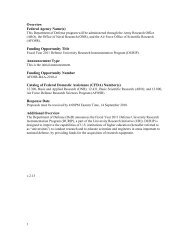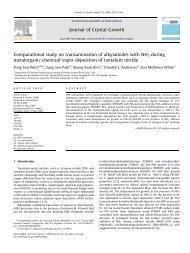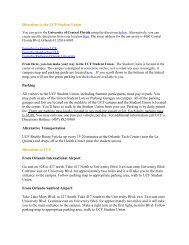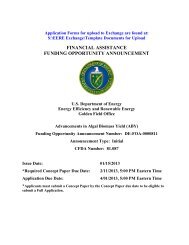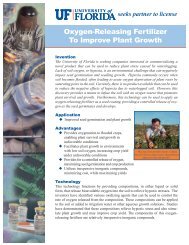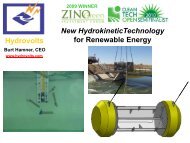Annual Report- Part III - Florida Energy Systems Consortium
Annual Report- Part III - Florida Energy Systems Consortium
Annual Report- Part III - Florida Energy Systems Consortium
You also want an ePaper? Increase the reach of your titles
YUMPU automatically turns print PDFs into web optimized ePapers that Google loves.
energy business sectors. FLATE develops the frameworks and facilitates their progress through themultiple sequential industry-validation, student competencies based, FLDOE procedure. FLATE alsodevelops new courses and provides faculty professional development as required for each new program ofstudy. Additionally FLATE helps colleges in the State College System implement the new frameworks intheir institutions. To support the new curriculum, FLATE will work closely with the FESC PublicOutreach and Industry <strong>Part</strong>nership programs to provide additional professional development opportunitiesfor teachers and faculty to upgrade and update their STEM knowledge base.Budget: $300,000External Collaborators: Brevard Community College; Tallahassee Community College; Daytona StateCollege; Central <strong>Florida</strong> Community College; Polk State College; <strong>Florida</strong> State College at Jacksonville;Valencia Community College; School District Hillsborough County; <strong>Florida</strong> Department of Education –Division of Adult and Career Education; West Side Technical School; WFI Banner Center for <strong>Energy</strong>;Advanced Technology for <strong>Energy</strong> and Environment Center (ATEEC); University of West <strong>Florida</strong>, Dept ofConstruction Technology; WFI Banner Center for Construction; WFI Banner Center for Alternative<strong>Energy</strong>; USF College of Engineering; Madison Area Technical College ATE project for Alternative <strong>Energy</strong>certifications; Milwaukee Area Technical College <strong>Energy</strong> Conservation and Advanced ManufacturingCenter (ECAM); <strong>Florida</strong> <strong>Energy</strong> Workforce <strong>Consortium</strong> (FEWC); TECO; Progress <strong>Energy</strong>; ISTEC (IberoScience and Technology Education <strong>Consortium</strong>).Title: Outreach Activities for FESCPI: Pierce Jones, Kathleen C. Ruppert, Hal S. Knowles <strong>III</strong>, Nicholas Taylor, Barbra Larson, Craig Miller-UFDescription: Developing educational outreach programs and materials designed to deliver practical,applicable information and knowledge on energy-related topics to the general public as well as targeted tospecific audiences such as builders, planners, engineers, architects, small businesses, local governments,and utilities through the Cooperative Extension Service and others. By focusing educational programmingon climate and efficient use of energy and water, the program aims to provide the knowledge needed bybuilding and energy professionals, local governments, and the general public, to significantly reducegreenhouse gas emissions in <strong>Florida</strong>.Budget: $497,670External Collaborators: Primarily DCA, FSU, UCF (FSEC), USF, and DEP with many others as well.Title: UFTR Digital Control System Upgrade for Education and Training of Engineers and OperatorsPI: Gabriel Ghita – UF (PI use to be Alireza Haghighat; he has left UF)Description: The goal of this project is to contribute to a major initiative on design, licensing andconstruction of a fully digital control system for the University of <strong>Florida</strong> Training Reactor (UFTR). Thismakes the UFTR the first operating nuclear power plant in the United States that uses a fully digital controlsystem. This facility will provide for the training and education of the necessary workforce in the area ofdigital control and instrumentation for nuclear reactors. With this effort, a new focus/certificate on digitalcontrol and instrumentation will be developed at the Nuclear and Radiological Engineering (NRE)Department. Further, the UFTR facility will offer training courses for community colleges (Central <strong>Florida</strong>,Indian River, and Jacksonville) in the State of <strong>Florida</strong>, personnel from nuclear utilities and governmentagencies including the Nuclear Regulatory Commission (NRC). The project has already receivedsignificant funding from industry and government in form of grants, contracts, equipment/systems, andengineers’ time.Budget: $308,000External Collaborators: Several engineers from AREVA NP Inc & Siemens Corporation88



